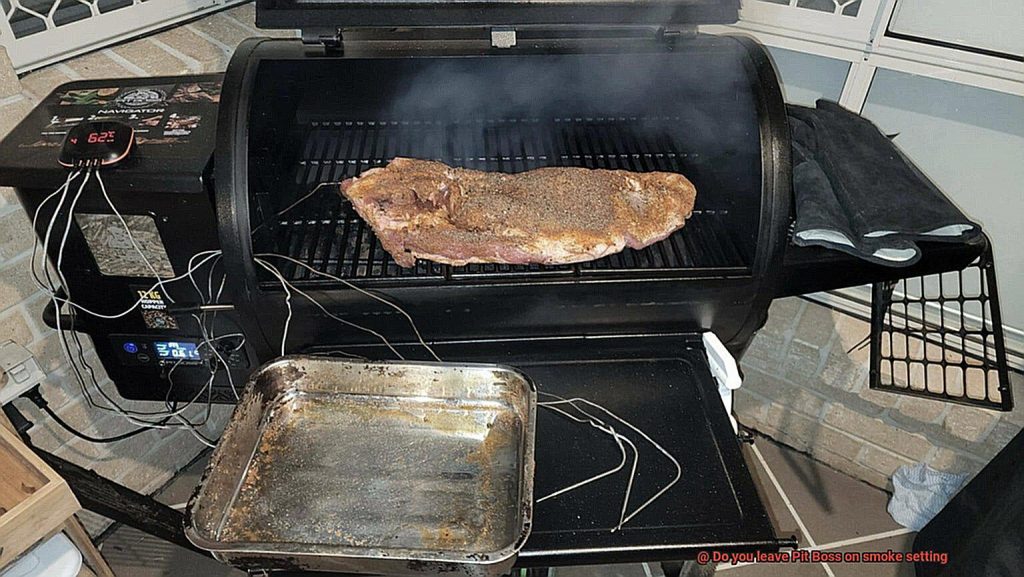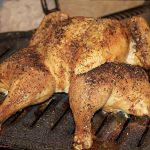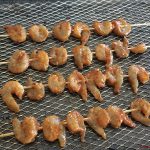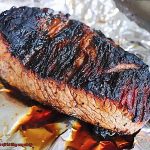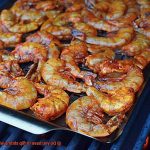As a pitmaster, you know that the key to delicious smoked meat is in the details. And when it comes to using your Pit Boss smoker, one of the biggest debates is whether or not to leave it on smoke setting.
Some swear by leaving it on this setting, claiming that it produces an intense and consistent smoky flavor that can’t be beat. Others argue that this setting is too low and prefer to adjust the temperature for optimal cooking.
But which is really better? In this article, we’re going to delve into the science behind smoking meat and explore the pros and cons of leaving your Pit Boss on smoke setting. We’ll also share tips and tricks for getting the most out of your smoker no matter which method you choose.
So, whether you’re a seasoned pro or just starting out on your smoking journey, keep reading to find out if you should leave Pit Boss on smoke setting for mouth-watering results.
Contents
What is a Pit Boss Grill?
These grills are designed to smoke and grill food using wood pellets as the fuel source, making them the ideal choice for those who want to experiment with different cooking styles.
One of the standout features of the Pit Boss Grill is its high-quality construction. Made with heavy-duty steel construction, cast-iron cooking grates, and electronic temperature control systems, these grills are built to last. Plus, their various sizes mean they can accommodate different cooking needs, whether it’s a small portable model or a larger commercial-grade unit.
In addition to its sturdy construction, the Pit Boss Grill is also unique in its ability to maintain consistent temperatures throughout the cooking process. The electronic temperature control system allows users to set precise temperature settings and monitor the temperature inside the grill in real-time. This ensures that your food is cooked evenly and to perfection every time.
But that’s not all – another standout feature of the Pit Boss Grill is its pellet hopper. This holds the wood pellets used to generate heat and smoke and usually sits on the side or rear of the grill. Depending on the model, these hoppers can hold anywhere from 10 to 40 pounds of pellets, making them perfect for long smoking sessions.
Speaking of smoking sessions, one of the great things about a Pit Boss Grill is its versatility. Whether you’re slow smoking a brisket, roasting vegetables, baking bread, or grilling burgers for a backyard BBQ, this grill can handle it all. And if you want to infuse your food with a smoky flavor, simply leave your Pit Boss on the smoke setting. Just be aware that different types of wood pellets can produce different levels of smoke – hickory pellets tend to produce a stronger smoke flavor than applewood pellets.
What is the Smoke Setting?
Then it’s time to get acquainted with the Smoke Setting, a feature found on most Pit Boss grills.
The Smoke Setting is a game changer for any barbecue enthusiast. It maintains a low temperature while producing a steady stream of smoke that seeps into your food, imparting that irresistible smoky taste. But before you start experimenting with this setting, there are a few things you should know.
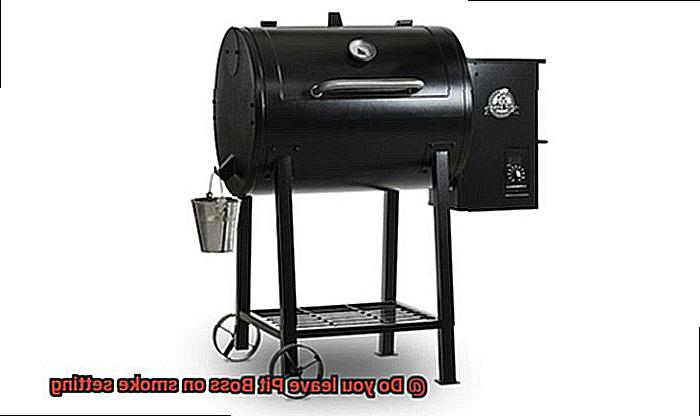
Firstly, the low temperature is key to achieving that smoky flavor. While it may mean longer cooking times, the result is worth the wait. Be sure to use a meat thermometer to ensure your food is cooked to perfection.
While the Smoke Setting is ideal for smoking meats, it’s not suitable for all types of cooking. Vegetables or baked goods may not benefit from this feature and might require a higher temperature setting.
In summary, here are some key takeaways about the Smoke Setting:
- It produces a steady stream of smoke at a low temperature
- Use a meat thermometer to ensure proper cooking
- Not suitable for all types of food
Should You Leave Your Pit Boss on the Smoke Setting?
Then the burning question on your mind is likely whether or not to leave it on the smoke setting. As a seasoned expert on smoking meats, I’m here to guide you through the nuances of this decision.
First off, let’s address the elephant in the room: if you’re aiming for a deep, intense smoky flavor in your meat, leaving the Pit Boss on the smoke setting for the entire cooking time may not be optimal. This is because lower temperatures can result in longer cooking times and less heat for searing, potentially sacrificing texture or sear. However, don’t let that deter you, as there are ways to achieve that delicious smoky flavor without compromising on texture or sear.
To help you navigate this question, here are some sub-topics and lists to consider:
- Experimentation is key: As with any cooking method, experimentation is key when it comes to using the smoke setting on your Pit Boss grill. Try out different methods and see what works best for you and your taste buds.
- A lighter smoky flavor: If you’re seeking a more subtle smoky flavor in your meat, leaving the Pit Boss on the smoke setting for part of the cooking time may be a good choice. This can infuse your meat with a light smokiness that doesn’t overpower its natural flavors.
- Consider the type of meat: Different meats have different ideal cooking methods. For instance, tougher cuts like brisket or pork shoulder benefit from longer cooking times at lower temperatures, making the smoke setting an excellent choice. Conversely, delicate cuts like fish or chicken may require less time on the smoke setting.
- Don’t forget the thermometer: No matter what method you choose, it’s vital to use a meat thermometer to ensure your food is cooked to perfection. The smoke setting can result in longer cooking times, so keeping track of the internal temperature of your meat is crucial.
- Personal preference: Ultimately, the decision to leave your Pit Boss on the smoke setting hinges on personal preference. If you love that deep, smoky flavor and don’t mind sacrificing a bit of texture or sear, go for it. If you prefer a lighter smokiness or want to experiment with different methods, that’s perfectly fine too.

Benefits of Leaving the Smoke Setting On
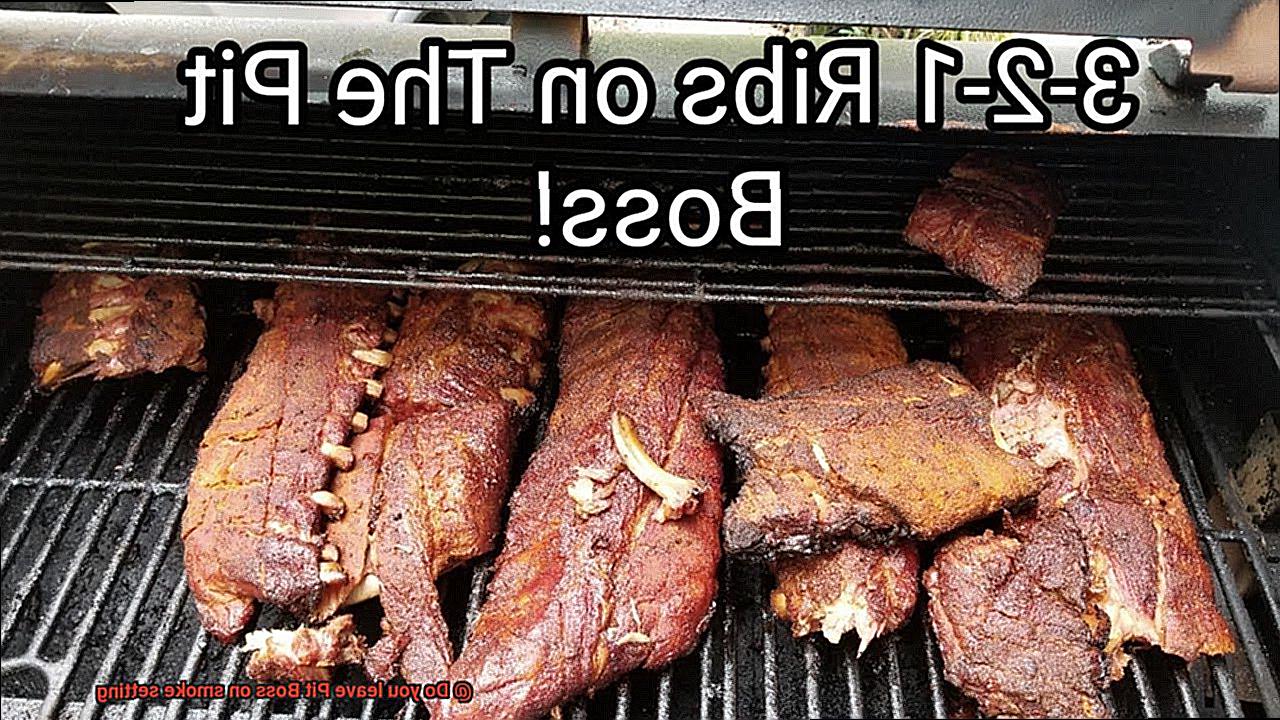
Look no further than your Pit Boss grill. By leaving the smoke setting on, you can take your grilling game to the next level and achieve a mouth-watering, smoky flavor that is hard to achieve with other cooking methods.
But the benefits of leaving the smoke setting on don’t stop there. Here are some other advantages:
- Tenderizing: The smoke penetrates the meat and breaks down connective tissues, making even the toughest cuts of meat more tender and flavorful.
- Visual Appeal: The smoke creates a beautiful caramelized crust on the outside of the meat, adding both flavor and aesthetic appeal to your dish.
- Time and Effort-Saving: By leaving the smoke setting on, you don’t need to constantly monitor your grill or add wood chips or pellets. You can set it and forget it, freeing up time to focus on other aspects of your cooking or entertaining.
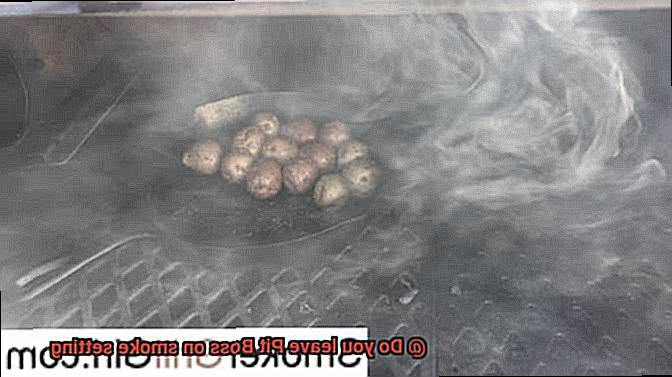
Reasons to Avoid Leaving the Smoke Setting On
However, doing so can cause several negative consequences that can ruin your meal. Here are five sub-sections that explain why it’s essential to avoid leaving the smoke setting on for too long:
Overpowering Smoke Flavor
Leaving the smoke setting on for an extended period can cause your food to become excessively smoky and bitter-tasting. The smoke flavor can overpower the natural flavors of your food, leading to an unpleasant dining experience. To avoid this, use the smoke setting sparingly to add just the right amount of flavor.
Dry and Tough Texture
Keeping the smoke setting on for too long can also cause your food to become overly dry. The smoke can absorb moisture from your food, leading to tough and chewy textures. Instead of leaving the smoke setting on, consider using a meat thermometer to monitor your food’s internal temperature.
Safety Concerns
Leaving the smoke setting on for too long can lead to safety concerns. When the grill is producing excessive amounts of smoke, it can be challenging to see what’s happening inside. This makes it difficult to monitor your food and ensure that it’s cooking correctly without burning or charring. To prevent this, keep an eye on your grill and adjust the temperature accordingly.
Wasted Fuel
Using the smoke setting for extended periods can also waste fuel. The constant flow of smoke requires more pellets, which can drain your fuel source quicker than necessary. Instead of leaving the smoke setting on for too long, consider using wood chips or chunks for added flavor.
Difficulty Regulating Temperature
Leaving the smoke setting on can also make it more challenging to regulate the temperature of your grill. This can lead to undercooked or overcooked meat, depending on how high or low the temperature gets. To avoid this, monitor your grill closely and adjust the temperature as needed to ensure even cooking.
Different Types of Wood Pellets and Their Effects on Smoking
When it comes to smoking on a Pit Boss grill, the type of wood pellets you use can greatly affect the flavor and smoke production of your food. With a wide variety of wood pellet options available, it’s important to understand the unique characteristics of each type.
Hickory Wood Pellets
Hickory wood pellets are the most popular type of wood pellets used for smoking. They provide a strong, smoky flavor that pairs well with red meats like beef and pork. However, it’s important to note that hickory can be quite strong, so it’s best to use it in moderation or mix it with other milder woods. The amount of smoke produced by hickory pellets is also higher than other types, so make sure to monitor the amount of smoke in your smoker.
Mesquite Wood Pellets
Mesquite wood pellets are known for their bold and intense flavor. They are great for grilling chicken and fish, as well as beef and pork. However, like hickory, mesquite can be overpowering if used in excess. Mesquite pellets also produce a lot of smoke, which can cause your food to taste bitter if not monitored carefully.
Applewood Pellets
For a milder option, consider using applewood pellets. Applewood provides a sweet and fruity flavor that’s perfect for smoking poultry, pork, and vegetables. Its smoke production is on the lower side compared to hickory and mesquite, so you may need to add more pellets to achieve the desired level of smoke.
Cherrywood Pellets
If you’re looking for a more unique flavor profile, try using cherrywood pellets. Cherrywood provides a slightly sweet and tangy flavor that pairs well with pork and game meats like venison or elk. Its smoke production is similar to applewood, so be prepared to add more pellets as needed.
Oak Pellets
Finally, there’s oak pellets, which provide a mild and versatile flavor that works well with almost any type of meat. Oak is often used as a base wood when mixing with stronger flavored woods like hickory or mesquite. Its smoke production is moderate and it complements other flavors well.
Tips for Getting the Perfect Smoky Flavor from Your Pit Boss Grill
Here are five tips to help you achieve that perfect smoky flavor from your Pit Boss grill.
Choose the Right Wood Pellets
One of the most crucial factors in achieving the perfect smoky flavor is selecting the right type of wood pellets. Different types of wood produce varying levels of smoke and flavor. For example, hickory pellets produce a stronger smoky flavor than fruitwood pellets. Experiment with different types of pellets to find the ones that work best for the flavors you want to achieve.
Consider the Temperature
The temperature at which you cook your food plays a significant role in achieving the desired smokiness. If you’re cooking at a low temperature for an extended period, such as smoking ribs or brisket, it’s best to keep your Pit Boss on the smoke setting for the first few hours. This allows the meat to absorb as much smoke flavor as possible before increasing the temperature for cooking. However, if you’re grilling steaks or chicken at a higher temperature for a shorter time, it’s best to turn off the smoke setting after the first few minutes of cooking to avoid over-smoking.
Preheat Your Grill
Preheating your grill is crucial in ensuring that it reaches the desired temperature before adding your food. It also allows the wood pellets to start producing smoke, resulting in a more consistent and even smokiness throughout your food.
Monitor Cooking Time and Temperature
Monitoring your cooking time and temperature is essential to achieving a perfect smoky flavor without over-smoking or undercooking your food. Leaving your food on the grill for too long can result in a bitter taste due to excessive smoking, while cooking at low temperatures for an extended period can result in dry or undercooked food. Therefore, it’s crucial to follow a recipe or cooking chart and adjust the time and temperature accordingly.
Keep Your Grill Clean
Finally, keeping your grill clean is essential to ensuring efficient burning of wood pellets and producing a consistent smoky flavor. Ash and debris buildup can affect the performance of your Pit Boss grill, resulting in uneven heat and smoke levels.
ZfsSl4PPSWE” >
Conclusion
In conclusion, the decision to leave your Pit Boss smoker on the smoke setting ultimately boils down to personal preference and the type of meat you’re cooking. While this setting can produce a consistent and intense smoky flavor, it may not be suitable for all food types and can result in longer cooking times and less heat for searing.
But if you do decide to keep your smoker on the smoke setting, there are several benefits to enjoy. The smoke can tenderize your meat, create a beautiful caramelized crust, and save time and effort by allowing you to set it and forget it.
To get the most out of your Pit Boss grill when smoking, don’t forget about the role that wood pellets play in enhancing flavor. Whether you prefer hickory, mesquite, applewood, cherrywood or oak, each type provides different levels of smokiness and flavor profiles.
So how do you achieve that perfect smoky taste? It’s all about monitoring cooking time and temperature closely with a meat thermometer, preheating your grill before adding food, experimenting with different methods based on personal preference and type of meat being cooked.
And last but not least – keeping your grill clean is essential to ensuring efficient burning of wood pellets and producing a consistent smoky flavor.

